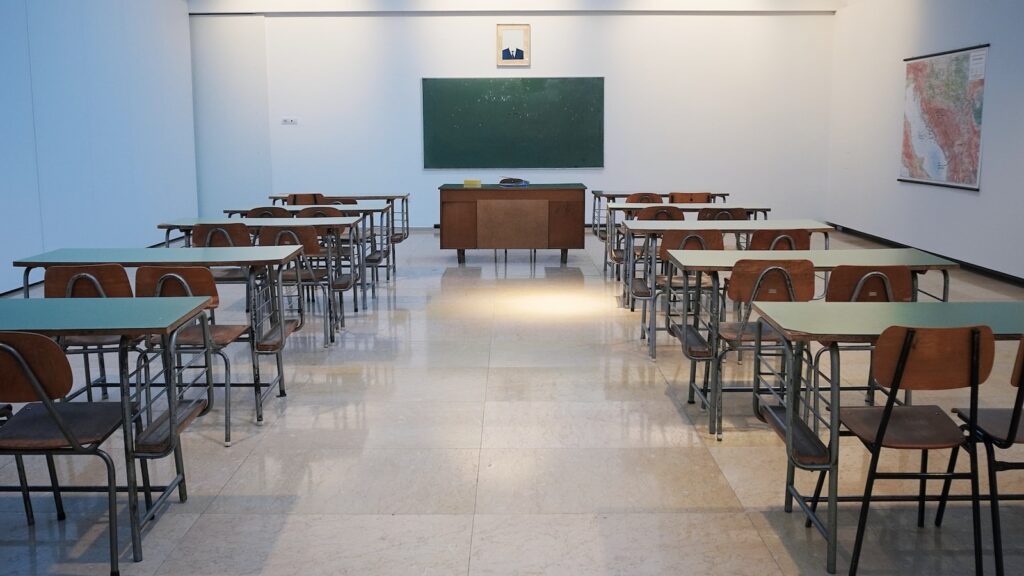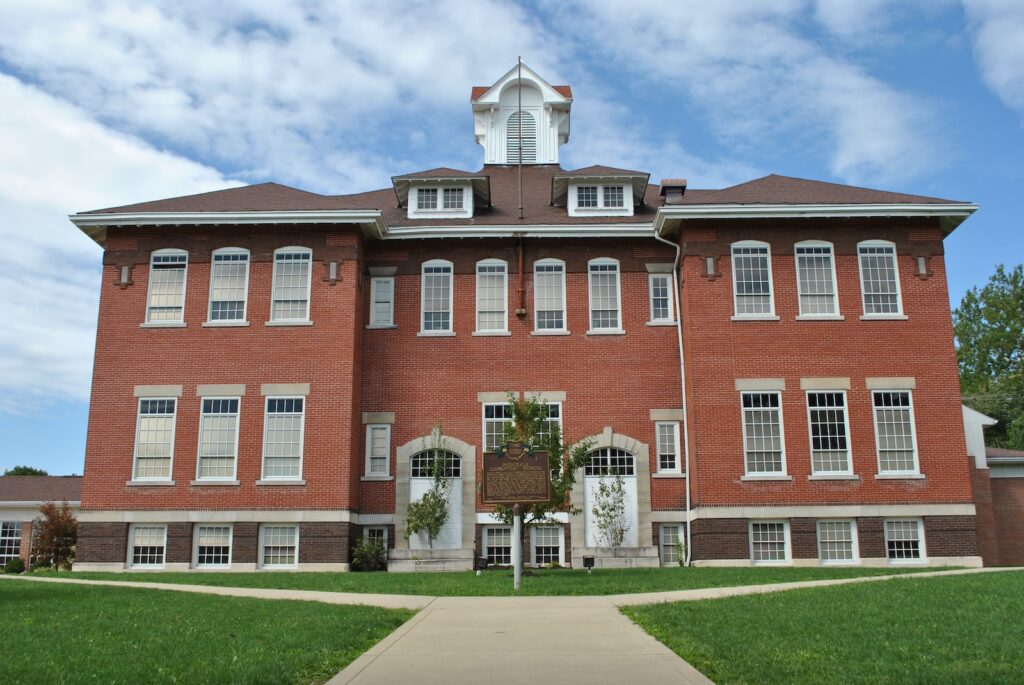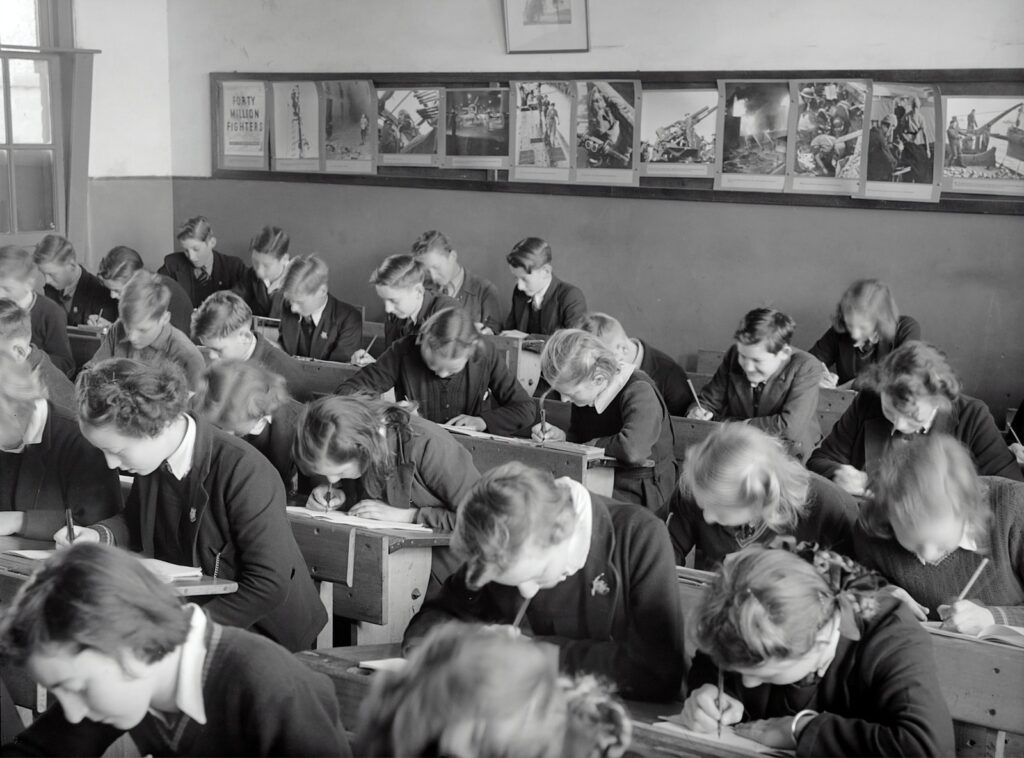Introduction
Navigating the educational landscape for your child may seem like a daunting task, but one of the most important decisions you’ll make is choosing the right school. In the United Kingdom, there are two primary school sectors – private and state.
This article aims to provide a comprehensive overview of these two options, highlighting their differences, advantages, and disadvantages to help parents make an informed decision.
Private schools, often referred to as independent schools, are typically fee-charging establishments that aren’t funded by the government. They provide education from primary through to secondary level and have the autonomy to determine their curriculum, teaching methods, and school policies.
On the contrary, state schools are publicly funded and must adhere to the national curriculum set by the government. This includes both primary and secondary schools, and unlike private schools, they don’t charge tuition fees.
However, the distinction between private and state schools in the UK goes beyond just funding and curriculum. There are several key differences that parents need to consider, each of which can significantly impact a child’s educational experience and future prospects.
These differences include factors such as location, cost, academic performance, class sizes, and the availability of extracurricular activities.
For instance, private schools are often situated in more affluent areas and tend to have higher tuition fees, limiting access for students from diverse financial backgrounds.
In contrast, state schools are typically found in all types of neighborhoods and are more financially accessible due to the lack of tuition fees. Academic performance also varies between the two sectors, with private schools typically achieving higher examination results.
Class sizes also play a crucial role in a child’s educational experience. In private schools, smaller class sizes are the norm, allowing for more individualized attention from teachers.
Conversely, state schools tend to have larger class sizes, which might impact the level of attention each student receives. Extracurricular activities, which can enrich a child’s educational journey, also vary significantly between private and state schools.
This introduction sets the stage for a deeper exploration into the nuanced differences, pros, and cons of private and state schools in the UK. The subsequent sections will provide a detailed analysis of these aspects to assist you in making the best choice for your child’s education.
Factors to Consider When Choosing a School

When thinking about choosing a school for your child, there are many factors to consider that extend beyond just academics. Here are some crucial points to take into account during your school selection process.
One of the first things to consider is the location of the school. The proximity of the school to your home or workplace could impact your child’s daily commute and by extension, their punctuality and energy levels.
If the school is too far away, your child may have to spend a significant amount of time travelling, which could affect their ability to participate in after-school activities or complete their homework.
It’s also important to consider the school’s surroundings. Is it in a safe and conducive environment for learning? Is it easily accessible by public transportation, or will it require private transportation?
The cost of schooling is another critical factor to consider. Private schools in the UK are known for their high fees while state schools are mostly funded by taxpayers and are free of charge.
Keep in mind that private school fees often cover more than just tuition; they may also include costs for uniforms, books, extracurricular activities, and trips.
It’s important to assess your financial capabilities and determine what you can comfortably afford without straining your family’s budget.
Academic performance is a significant aspect to contemplate when deciding between private and state schools. Both types of schools have their merits, but studies have shown that private schools often outperform state schools in standardised testing.
However, there are also state schools that are highly competitive and provide excellent education. Ultimately, it’s worth evaluating the school’s curriculum, teaching approach, examination results, and university acceptance rates.
Class size is another consideration that could impact your child’s learning experience. Generally, private schools tend to have smaller class sizes, which can mean more personalized attention from teachers, fewer distractions, and a stronger sense of community.
On the other hand, larger class sizes in state schools may encourage greater independence and resilience and offer a wider variety of perspectives during class discussions.
Extracurricular activities can significantly enrich your child’s school experience, providing opportunities for character development outside the academic sphere.
Private schools often offer a broader range of activities, from sports and arts to clubs and community service opportunities. However, many state schools also offer a range of extracurricular activities, even though they may be more limited due to budget constraints.
Choosing a school for your child is a significant decision that can impact their future. It’s critical to consider all these factors and weigh the pros and cons of each option. Remember, the best choice will depend on your child’s individual needs, interests, and personality.
Advantages of Private Schools

Private education in the UK has always been associated with a certain level of prestige and superiority. One of the main advantages of private schools lies in their smaller class sizes.
These institutions usually maintain a lower student to teacher ratio as compared to state schools, thus enabling more personalised attention and individualised instruction.
This means that each student’s progress is continuously monitored and any difficulties or challenges faced can be promptly addressed. Essentially, the opportunity for one-on-one attention can greatly enhance a child’s learning experience and academic performance.
Private schools also boast superior facilities, often providing a much broader range of amenities. These can include state-of-the-art science labs, modern technology, well-stocked libraries, and high-quality sports facilities.
These resources not only benefit students academically but also provide a more enriched learning environment. The benefit of such facilities is twofold: they provide students with the opportunity to explore a wider range of activities and interests, while also contributing to a stimulating and engaging learning environment that fosters creativity and innovation.
Enhanced extracurricular activities are another significant advantage of private schools. In addition to the standard curriculum, these schools often offer an impressive array of clubs, sports, arts, and other extracurricular activities.
Such a diverse offering not only enables students to discover and nurture their talents, but also equips them with a broader skill set that goes beyond academics. These activities contribute to the overall development of a child, cultivating leadership, teamwork, creativity, and resilience.
Academic performance is another area where private schools tend to excel. With rigorous academic programs, high expectations, and a strong emphasis on discipline and good study habits, students in these schools are often well-prepared for their future academic pursuits.
In fact, private schools in the UK have a strong track record of students achieving high grades in public examinations and gaining admission into top universities.
However, it’s worth noting that the advantages of private schools go beyond academic performance and extracurricular activities. Many private schools place a strong emphasis on character building and personal development.
These schools often have values-based education programs aimed at developing well-rounded individuals who are not just academically successful but also socially responsible and morally upright.
In conclusion, private schools provide a wealth of advantages from smaller class sizes and superior facilities to enhanced extracurricular activities and higher academic performances. They offer an enriched learning environment where students are encouraged to strive for excellence in all areas of their development.
However, it’s important for parents to understand that these benefits come with a significant financial commitment. Therefore, it is essential to consider all aspects before making such an important decision.
Disadvantages of Private Schools

While private schools in the UK boast numerous advantages, they also have some significant disadvantages that can’t be overlooked. The first, and perhaps most apparent, is the cost.
Private school tuition fees are considerably high, ranging from £10,000 to over £40,000 per year depending on the school and the age of the child. This is a figure far beyond the reach of most families, making private school education a privilege accessible only to a small fraction of the population.
For some families, the cost of a private education can put a significant financial strain on their budget and potentially lead to long-term debt.
Aside from the financial aspect, another drawback of private schools involves the advantage they may provide in public examinations. It’s no secret that private schools generally have higher academic performances, partly due to their smaller class sizes and personalised learning.
However, this can sometimes lead to an unfair advantage in public examinations, as students from private schools are often better-prepared and have access to more resources than their state school counterparts.
This discrepancy can contribute to an uneven playing field, undermining the meritocratic principle that public examinations are meant to uphold.
Private schools also tend to lack the diversity that is characteristic of state schools. Due to their high fees, private schools are often predominantly populated by students from affluent backgrounds.
This can limit students’ exposure to different cultures, socioeconomic backgrounds, and worldviews, which are all critical aspects of a well-rounded education.
The lack of diversity can create a bubble of privilege which can be a disadvantage for students later in life, as it doesn’t prepare them for the diversity and complexity of the real world.
Furthermore, while private schools are often lauded for their ability to nurture individual talents, their high-pressure environments can sometimes be detrimental to students’ mental health. The expectation to excel can place an immense amount of stress on students, which can lead to anxiety and other mental health problems.
It’s worth noting that these issues are not exclusive to private schools, but the pressure to perform can be particularly intense in these environments.
Lastly, private schools can contribute to social division by perpetuating elitism and class inequality. Their exclusivity and the high level of resources they provide to their students can lead to a perceived or real sense of superiority among private school students.
This can contribute to a divide between students from private and state schools, which can have wider implications for social cohesion.
In summary, while private schools do offer a range of benefits, they also come with a considerable number of disadvantages.
High cost, potential unfair advantages in exams, limited diversity, potential pressure on students’ mental health, and a contribution to social division are all factors that need to be weighed carefully when considering a private school education.
Advantages of State Schools

There are several notable advantages of state schools in the UK that make them a viable and often preferred option for many families. The most immediate and apparent benefit is the significantly lower cost of education.
Unlike private schools, which can cost a hefty sum each term, state schools are publicly funded and free at the point of use.
Therefore, children can receive a solid education without placing a financial burden on their families. This is a crucial factor for many parents, particularly in an era where the cost of living is constantly on the rise.
State schools also tend to be much more accessible and inclusive than private schools. They are open to all students regardless of their financial background, making education a universal right, not a privilege.
This diversity also extends to the classroom, where students are exposed to a wide range of perspectives and experiences. This melting pot of different backgrounds can be an excellent environment for children to learn about cultures, values, and beliefs different from their own.
Moreover, while it’s generally perceived that state schools in the UK do not match the academic performance of private schools, it’s essential to note that high-quality education is not exclusive to private schools.
State schools follow a regulated and standardised curriculum set by the government, ensuring that all children receive a base level of education. Many state schools also boast high-achieving students, often outperforming their private school counterparts in certain subjects.
Another vital point to consider is the commitment of state schools to provide education for all. This includes comprehensive support for students with special educational needs.
State schools are legally obligated to make necessary provisions for these students, such as additional resources, support staff, and tailored learning plans. This level of inclusivity can often be missing in private schools, making state schools a vital lifeline for families with children who have special educational needs.
Finally, it’s worth noting that state schools often foster a strong sense of community. Given that students often live within the local area, they can form close-knit friendships and strong bonds with their peers. This can contribute considerably to a child’s social development and their sense of belonging.
In conclusion, while state schools may not offer the same prestige or exclusivity as private schools, they deliver in areas that are arguably just as important. The lower costs, inclusivity, access to a standardised curriculum, provision for special educational needs, and sense of community all make state schools a compelling choice for many families.
Disadvantages of State Schools

While state schools in the UK provide a valuable, cost-effective education for many students, they’re also faced with several disadvantages. These challenges largely stem from their inherent structure and funding, which can limit the resources available to students and teachers.
One of the most evident disadvantages of state schools is the larger class sizes. This is due to the fact that state schools are accessible to everyone, regardless of their financial background. While this is advantageous in promoting diversity and inclusivity, it also means that classrooms can be filled to capacity.
Consequently, teachers may struggle to provide individual attention to each student, which can hinder a child’s learning progress. Pupils might find it hard to participate in class discussions or receive the extra help they might require.
In some extreme cases, large class sizes may even affect the school’s ability to maintain discipline and a conducive learning environment.
The second disadvantage lies in the limited range of extracurricular activities. Extracurricular activities play a crucial role in a child’s overall development, helping to broaden their skills and interests beyond the classroom.
While private schools often have a vast range of clubs, sports, and activities, state schools are often constrained by budget limitations. As a result, students may have a narrower choice of extracurricular opportunities, which could limit their social development and the chance to discover new interests.
State schools also face the challenge of managing their academic performance. While it is a misconception that all state schools perform poorly academically, statistical evidence suggests that, on average, students in private schools demonstrate higher academic achievement.
This disparity can be attributed to various factors, including the larger class sizes, limited resources, and a lesser focus on individual learning needs.
Moreover, state schools are mandated to follow the national curriculum set by the government. While this ensures a uniform standard of education across the country, it also restricts the flexibility for teachers to adapt the curriculum to their students’ unique learning needs and interests.
On the other hand, private schools often have more leeway in curating their academic programs, allowing for a more bespoke learning experience.
Lastly, state schools may not have the same level of facilities as their private counterparts. From advanced science labs to extensive libraries and sports facilities, the quality and range of facilities can significantly enhance the learning experience.
Unfortunately, due to funding constraints, state schools might not be able to provide the same level of resources, which could affect the overall quality of education.
In conclusion, while state schools provide a necessary service and offer an affordable education for all, they are also faced with several challenges.
These include larger class sizes, limited extracurricular activities, and potential disadvantages in academic performance, curriculum flexibility, and facilities. Each of these factors should be considered by parents when deciding the best educational path for their child.
Conclusion
In conclusion, the decision to choose between a private and a state school in the UK is a significant one and should be taken after thorough consideration of various factors. The choice ultimately boils down to the child’s learning needs, the family’s financial capacity, as well as the quality and type of education desired.
Each school system has its advantages and drawbacks, and the crux lies in understanding which one aligns better with your child’s educational aspirations and your financial abilities.
Private schools in the UK, famed for their smaller class sizes, access to superior facilities, enhanced extracurricular activities, and high academic performances may seem like an attractive option. However, the high cost of tuition may be a deterrent for many families.
Furthermore, the perception of an unfair advantage in public examinations and a lack of diversity in private schools may not sit well with some parents.
On the other hand, state schools which offer lower tuition fees and are accessible to all students irrespective of their financial background present an inclusive learning environment. These schools provide high-quality education and make efforts to bridge the gap in academic performance.
However, the larger class sizes and limited extracurricular activities could be viewed as drawbacks by some.
It’s essential to remember that academic success isn’t synonymous with private education. Many state schools in the UK consistently perform well in national rankings, demonstrating their commitment to delivering high-quality education.
Affordability does not have to compromise quality. It is also important to recognise that smaller class sizes or extensive extracurricular activities in private schools do not automatically equate to a better education; the quality of teaching and the school’s ethos play a pivotal role in shaping a student’s learning experience.
Therefore, instead of making a choice based solely on the ‘private’ or ‘state’ label, it is more beneficial for parents to consider the individual strengths and weaknesses of each school, keeping in mind their child’s needs and potentials.
A school’s values, ethos, teaching styles, academic and extracurricular provisions are all crucial aspects to consider.
In the end, the right school for your child is the one that nurtures their individuality, fosters their growth, challenges them academically, and equips them with the skills necessary for their future. So whether it’s private or state, the focus should be on choosing a school where your child will thrive and not just survive.

